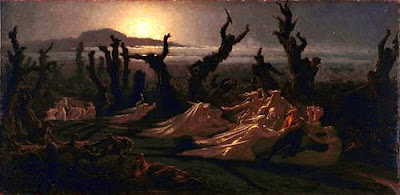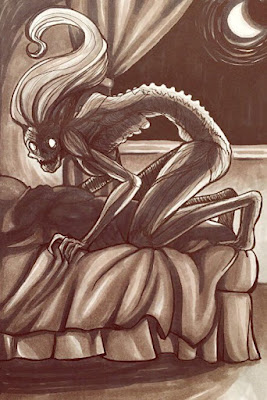The
Kathakano possesses the closest similarity to the western vampire. It is
a pale blood-sucking creature that walks on the darkest of night and spread
disease that causes the random death of the villagers, more like a generic
vampire. A Catacano is a grinning vampire, so there is a widespread belief in
Crete not to trust anyone smiling.
How to Identify a
Kathakano/Catacano
At first
sight, a kathakano might look like an average stranger passing by. He seems
like a happy and friendly drunkard. However, if you get too close to this
creature, it will spit blood on you that would cause a terrible burning
sensation. The spit of this vampire creature was believed to contain a
high amount of acidity produced by its undead body. While the victim is
excruciating in pain, the Catacano would charge and devour its victim using its
sharp teeth.
How to Kill a Catacano
Like most
vampires, it is better to kill a kathakano while sleeping. A Catacano
would return from its grave in the morning, where it rests, and it is in its
most vulnerable state. When the casket is opened, and the suspected
corpse contains no decay, there's a high probability that they are a
vampire. A person should behead the carcass immediately. They would
then have to place the head on a large pot filled with vinegar and melted snow.
He should then boil the mixture of water and vinegar.
After a
few minutes of boiling the mixture, they should place the head on the boiling
vinegar using tongs. The process should last for an hour; the time kept
according to a priest's pocket watch. After this, the method of repelling
the undead manifestation is complete. The head should be placed back to
the casket to be reburied.
However, on
the off chance that the attack of the kathakano persists, the head and the
whole corpse should be burned until it turns into ashes. The ashes should
be returned to the casket and reburied.


















